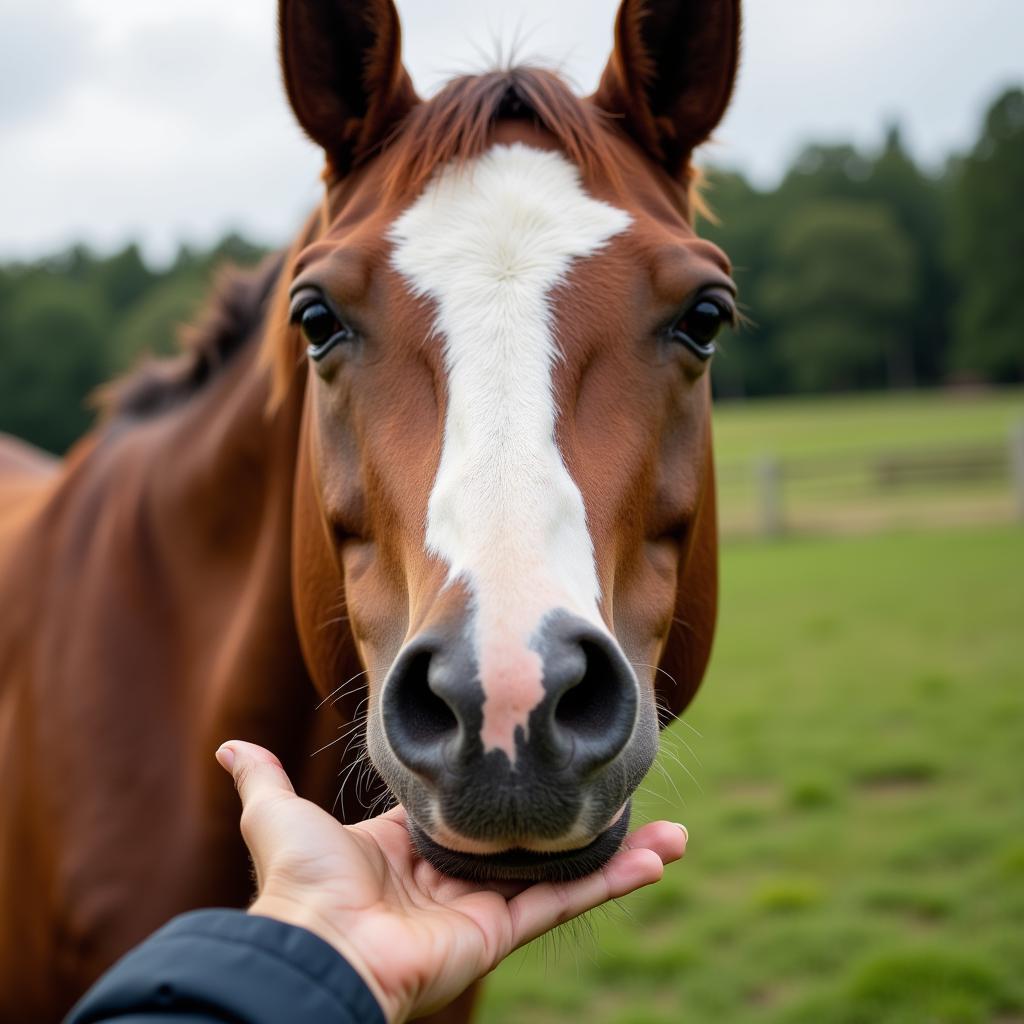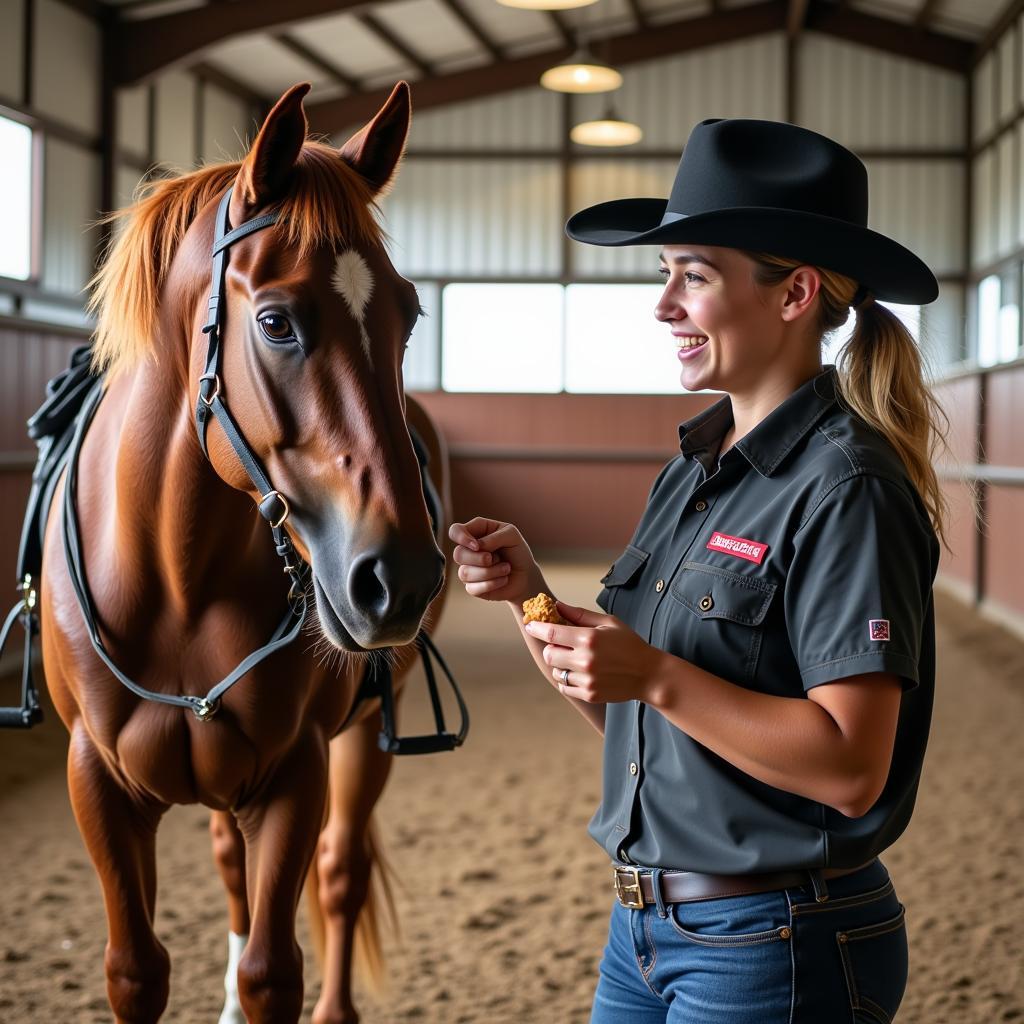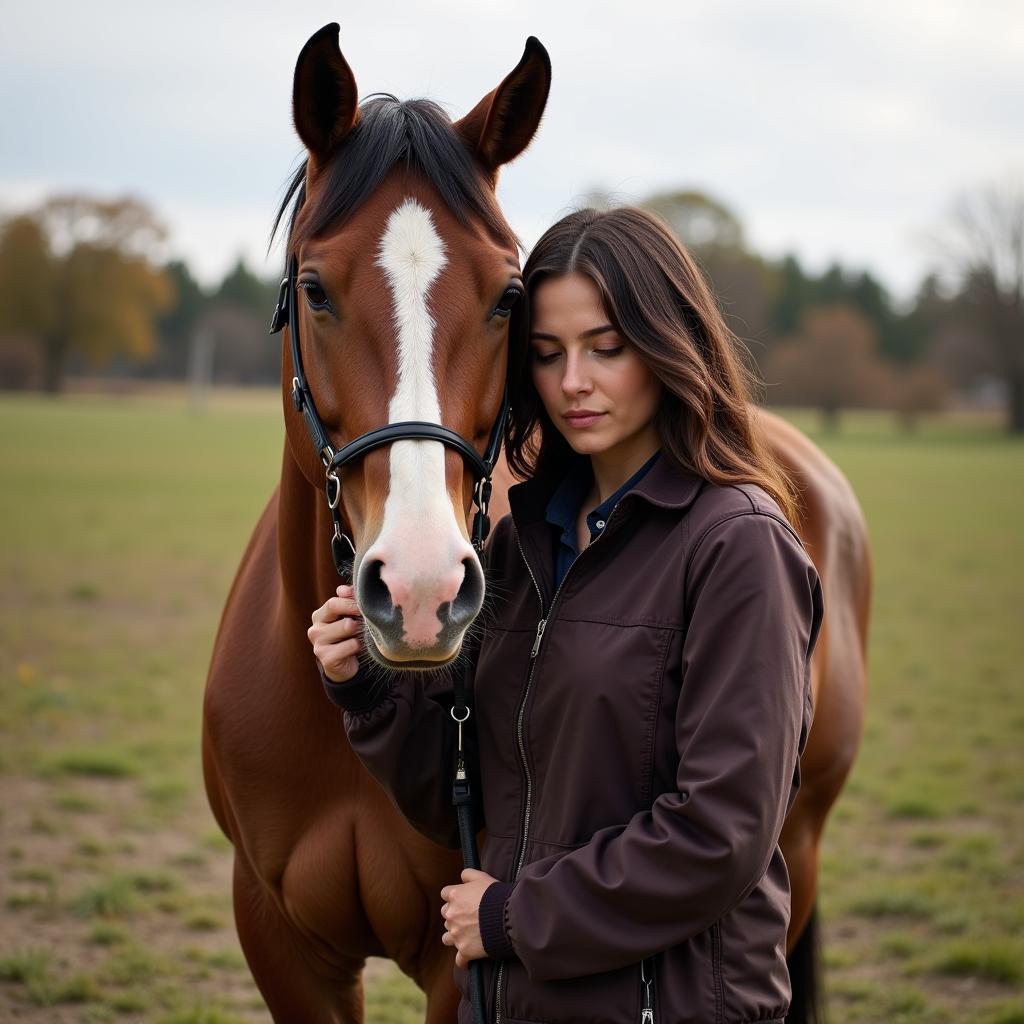Understanding how to “meek” a horse really boils down to understanding how to gently and patiently build trust and connection. It’s about establishing a partnership where the horse feels safe, respected, and willing to work with you. This requires more than just basic horsemanship; it’s about developing a deep understanding of equine behavior and communication.
The Meaning of “Meeking” a Horse
The term “meeking” isn’t a standard equestrian term, but it implies the process of gentling or taming a horse, making it more docile and manageable. This involves building rapport, desensitizing to stimuli, and teaching basic obedience. It’s not about breaking a horse’s spirit, but rather earning its trust and respect. A truly “meek” horse is not subdued through fear, but willing and cooperative because it feels secure and understands what’s expected of it.
Building a Foundation of Trust
The foundation of meeking a horse lies in building a strong bond of trust. This begins with understanding horse psychology. Horses are prey animals, inherently wary of anything new or unfamiliar. Approaching a horse with calm confidence, slow movements, and gentle intentions is crucial. Avoid sudden movements or loud noises that might startle them. Speaking softly and offering gentle strokes can help establish a positive connection.
 Building Trust with a Gentle Approach
Building Trust with a Gentle Approach
Desensitization and Patience: Key Elements
Desensitization plays a vital role in meeking a horse. This involves gradually exposing the horse to various stimuli, like different sounds, objects, and environments, in a controlled and safe manner. Start slowly, allowing the horse to investigate and become comfortable with each new element before introducing another. Patience is paramount; some horses take longer than others to accept new things. Never force a horse; allow it to adjust at its own pace.
Positive Reinforcement: Rewarding Desired Behavior
Positive reinforcement is the cornerstone of effective horse training, especially when meeking a horse. Rewarding desired behavior, such as following a lead or standing still for grooming, with a kind word, a gentle pat, or a small treat helps reinforce positive associations. This method encourages the horse to repeat the behavior, creating a cycle of positive interactions that strengthen the bond between horse and handler.
 Positive Reinforcement in Horse Training
Positive Reinforcement in Horse Training
Communicating Effectively with Your Horse
Understanding horse body language is essential for effective communication. Observe the horse’s ears, eyes, and tail for cues about its emotional state. Soft eyes, relaxed ears, and a loosely hanging tail indicate a calm and receptive horse. Pinned ears, wide eyes, and a swishing tail can signal fear or anxiety. Learning to interpret these signals helps tailor your approach and avoid escalating any potential anxieties.
Establishing Leadership and Clear Boundaries
While gentleness is vital, establishing yourself as a leader is equally important. Horses are herd animals and thrive on clear boundaries and leadership. This doesn’t mean being domineering; it means being consistent and assertive in your requests. Clear communication and consistent expectations create a sense of security for the horse, allowing it to relax and trust in your guidance.
Meek a Horse: A Continuous Journey
Meeking a horse isn’t a one-time event, but rather a continuous journey of learning and understanding. It requires dedication, patience, and a genuine desire to connect with the horse on a deeper level. The rewards of this journey are immeasurable, culminating in a strong, trusting partnership built on mutual respect and understanding.
Conclusion: Building a Deeper Connection
Meeking a horse is about more than just training; it’s about cultivating a partnership based on trust, respect, and clear communication. By understanding horse psychology, practicing patience and consistency, and prioritizing positive reinforcement, you can develop a deep and rewarding connection with your equine companion. This journey of building a deeper connection is the true essence of meeking a horse.
 Horse and Handler Connection
Horse and Handler Connection
FAQs:
- What does “meek” mean in relation to horses? It refers to the process of gentling a horse, making it more docile and manageable through trust and understanding.
- How long does it take to Meek A Horse? It depends on the individual horse, its history, and the handler’s approach. It’s a continuous process rather than a one-time event.
- What are the most important factors in meeking a horse? Patience, consistency, positive reinforcement, and a deep understanding of horse behavior.
- Can any horse be meeked? Most horses can be meeked with the right approach, but some may require more time and patience than others.
- Is meeking a horse the same as breaking a horse? No, meeking emphasizes building trust and cooperation, while “breaking” often implies forceful methods that can damage the horse’s spirit.
- What are some signs of a meek horse? A meek horse is calm, responsive to cues, and willing to work with its handler. It exhibits trust and confidence in its interactions.
- How can I learn more about meeking a horse? Consult with experienced horse trainers, read reputable equestrian resources, and observe interactions between experienced handlers and their horses.
Need help with horse care or training? Contact us at Phone Number: 0772127271, Email: [email protected] Or visit us at: QGM2+WX2, Vị Trung, Vị Thuỷ, Hậu Giang, Việt Nam. We have a 24/7 customer service team.